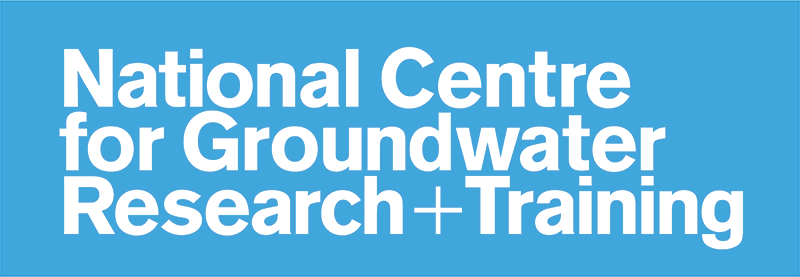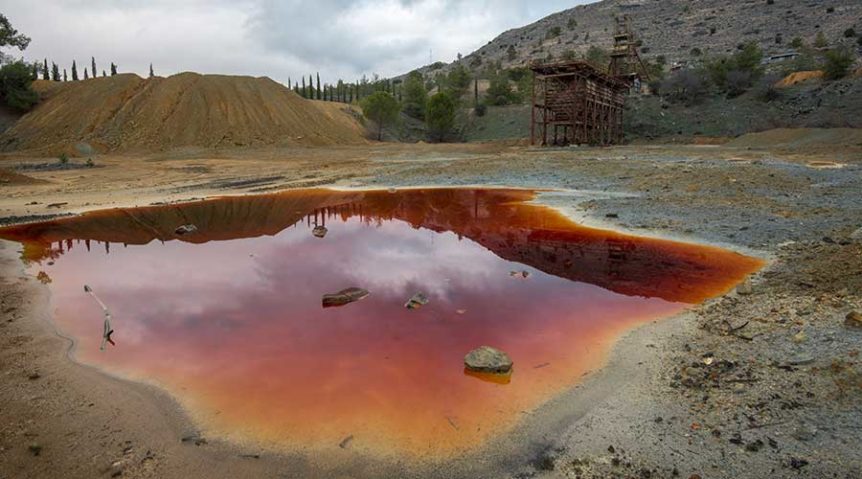NCGRT researchers are actively engaged in a diverse range of groundwater contamination studies. This includes work on groundwater salinity and its effect on usability of water resources; on geogenic contaminants such as arsenic and fluoride, which may be elevated due to natural geochemical interactions between groundwater and rock formations; on mining impacts on water quality, including acid mine generation and pit lake water chemistry as well as projects on urban contamination, including emerging contaminants in groundwaters such as perfluoroalkyl and polyfluoroalkyl substances (PFAS).
Our work frequently involves the use of geochemical modelling and/or reactive transport modelling to quantify the mobility of pollutants (e.g. nitrate, arsenic, PFAS); to predict water quality changes during managed aquifer recharge or during passage through wetlands; to evaluate remediation options and/or to quantify feedback mechanisms between chemical reactions and physical flow in aquifer systems.
By integrating and quantifying both physical as well as geochemical aspects of complex natural aquifer systems, NCGRT researchers are facilitating an integral approach to managing and mitigating potential risks posed by pollutants.
Selected Publications
Pearce JK, Golding SD, Baublys K, Hofmann H, Gargiulo G, Herbert SJ, and Hayes P (2023) Methane in aquifers and alluvium overlying a coal seam gas region: gas concentrations and isotopic differentiation. Science of the Total Environment, 861, 1-18. https://doi.org/10.1016/j.scitotenv.2022.160639.
Baublys KA, Hofmann H, Esterle JS, Cendón DI, Vink S, and Golding SD (2021) Geochemical influences on methanogenic groundwater from a low rank coal seam gas reservoir: Walloon Subgroup, Surat Basin. International Journal of Coal Geology, 24, 103841. https://doi.org/10.1016/j.coal.2021.103841.
Moser B, Beknazarova M, Whiley H, Keerthirathne T, Harrington N, De Garis K, and Wallis I (2021) Investigation into the Cause of Iron-Related Clogging of Groundwater Bores Used for Viticulture in the Limestone Coast, South Australia. Water, 13, 683. https://doi.org/10.3390/w13050683.
McCance W, Jones OAH, Cendón DI, Edwards M, Surapaneni A, Chadalavada S, and Currell M (2021) Decoupling wastewater impacts from hydrogeochemical trends in impacted groundwater resources. Science of The Total Environment, 774, 145781. https//doi.org/10.1016/j.scitotenv.2021.145781.
McDonough LK, Santos IR, Andersen MS, O’Carroll DM, Rutlidge H, Meredith K, Oudone P, Bridgeman J, Gooddy DC, Sorensen JPR, Lapworth DJ, MacDonald AM, Ward J, and Baker A (2020) Changes in global groundwater organic carbon driven by climate change and urbanization. Nature Communications, 11, 1279. https://doi.org/10.1038/s41467-020-14946-1.
McCance W, Jones OAH, Cendón DI, Edwards M, Surapaneni A, Chadalavada S, Wang S, and Currell M (2020) Combining environmental isotopes with Contaminants of Emerging Concern (CECs) to characterise wastewater derived impacts on groundwater quality. Water Research, 1, 116036. https://doi.org/10.1016/j.watres.2020.116036.
Wallis I, Prommer H, Berg M, Siade A, Sun J, and Kipfer R (2020) The river–groundwater interface as a hotspot for arsenic release. Nature Geoscience, 13, 288-295. https://doi.org/10.1038/s41561-020-0557-6.
Wallis I, and Pichler T (2018) Generating false negatives and false positives for As and Mo concentration in groundwater due to well installation. Science of the Total Environment, 631-632, 723-732. https://doi.org/10.1016/j.scitotenv.2018.03.063.



